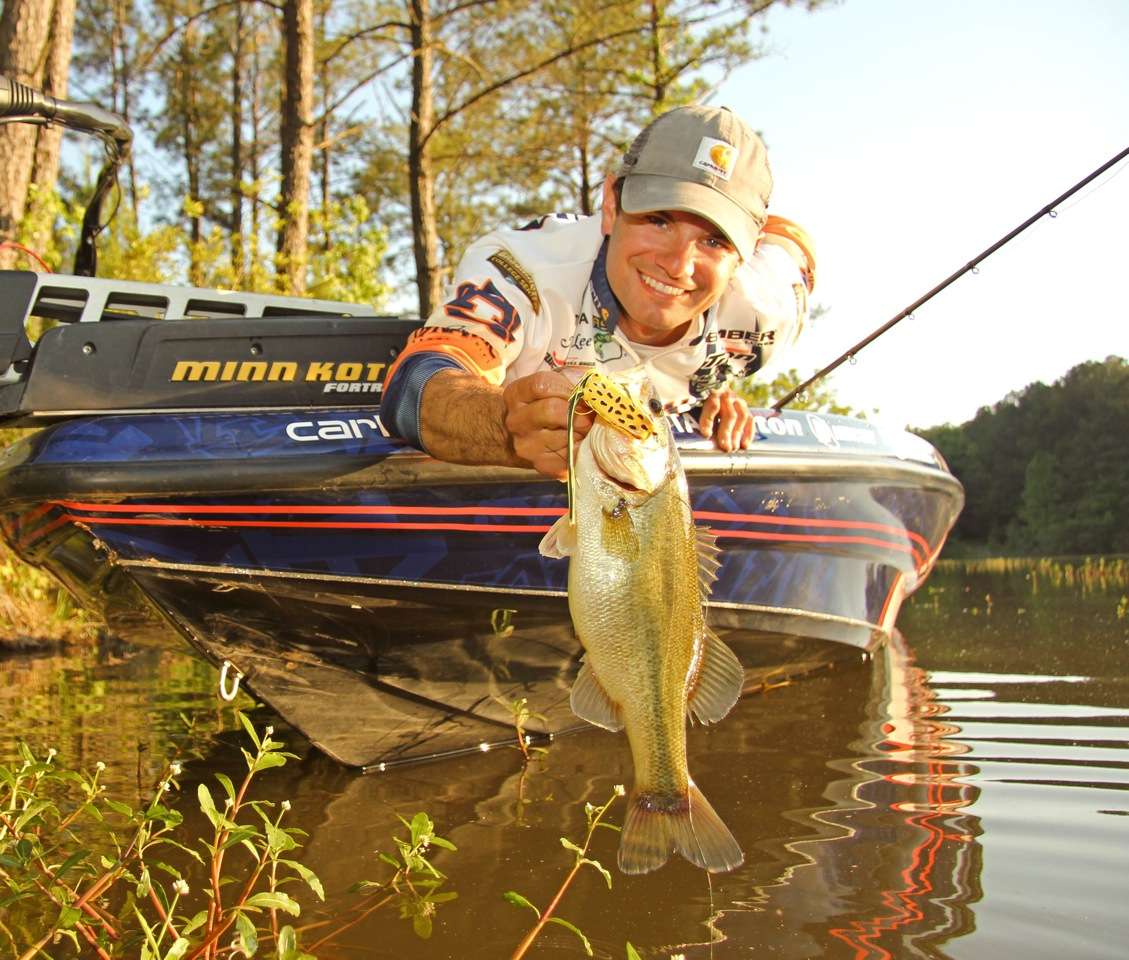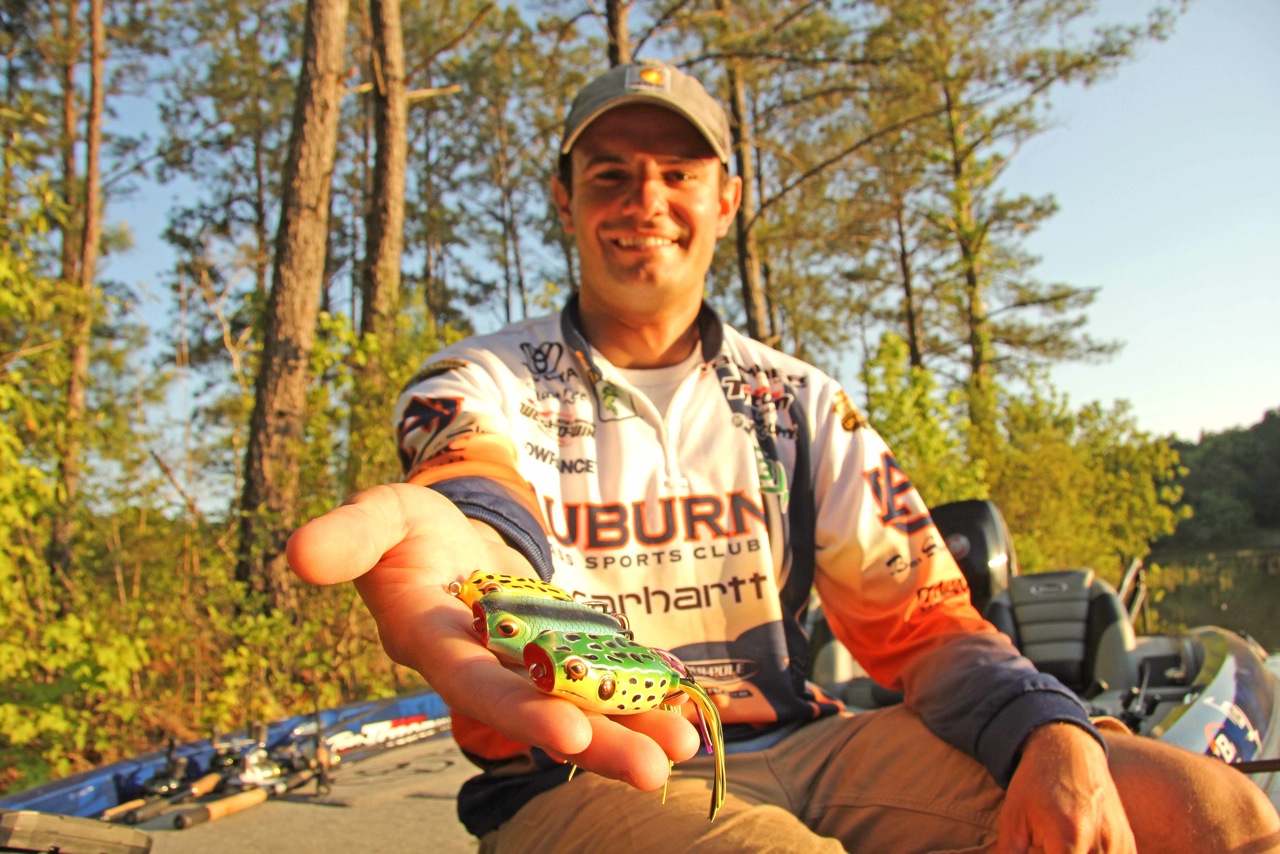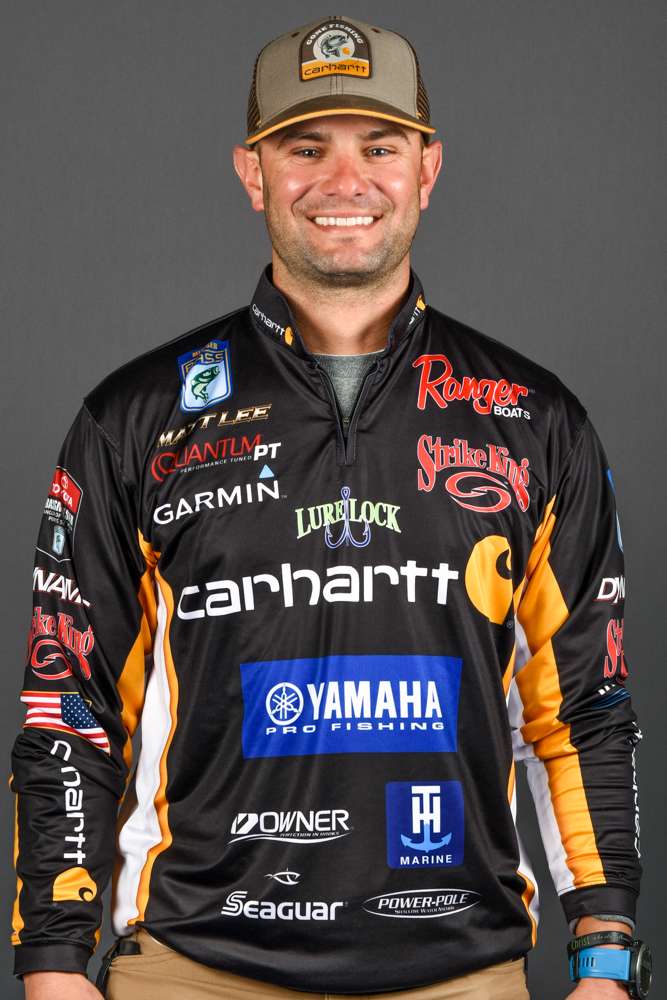
If I had to choose my favorite lure of all time, it would probably be a plastic surface frog. And while serious fisherman talk about football season being the best time of year for frog fishin’, I think that as long as the water temp is above the mid 50s, there’s hardly a bad time of year to cast a plastic frog – and right now in the middle of summer is one of the very best.
Aquatic vegetation is reaching its peak growth in summer, and a plastic frog with a pointed nose is the ultimate tool for catching a largemouth out of thick matted vegetation.
But, even if your favorite place to fish doesn’t have matted vegetation or lily pads, a surface frog with a concave nose like the Booyah Poppin’ Pad Crasher, that’s designed for ‘popping’ across the surface, is an awesome choice anywhere you have shade. The bright, smokin’ hot, sunny days of summer create shadows and shade around boat docks, and beneath overhanging limbs along the shoreline, and a frog is a great way to get bass to rise up and eat from those cool dark places even in the middle of a hot summer day.
If I had to pick one color of frog it would be black. Simply because it does a great job in a variety of light conditions of creating a silhouette the bass can see, whether it’s through matted vegetation or in the dark shadows of a shady shoreline. Yellow and green frogs are also among my top picks because they serve the dual purpose of mimicking not only frogs, but also the bream (sunfish) that are often present around vegetation.
I’ll give you one tip. Don’t be afraid to grab a pair of scissors and do a little barber work on the long strands of rubber that serve as the plastic frog’s legs. If I’m fishing the concave-faced popping frog in more open water or around laydowns or branches, I’ll trim about ½” off one leg, and 1 ½” off the other leg, and that’ll make it walk side-to-side across the surface.
On the pointed nose frogs I use in heavy vegetation, I’ll cut as much as 2” off each leg, because often times the bass will miss the bait as they smash through the matted hydrilla to get it. But with the legs trimmed way up, they’re more likely to get nothing but the body and the hooks.
As far as the tackle I use with my frogs, I like a heavy action rod like the 7’ 3” model made by a company called 13 Fishing. I pair it with a fast reel with at least a 7.0:1 gear ratio, and spool it with 50-pound braid. Braided line will not only allow you to cast a long distance, but mostly, braid offers you the strength necessary to pull fish from thick vegetation and wood where frogs are most effective.
In reality, I’m spending as much time in the basement of the University of Auburn library this summer studying to pass a class called Fundamentals of Electrical and Computer Engineering, as I am frog fishing at places like Lake Guntersville. This class deals with second order circuits, conductors and capacitors. No, it’s not much fun. In fact, it’s not even in the same universe of fun that catching a giant bass on a topwater frog is.

